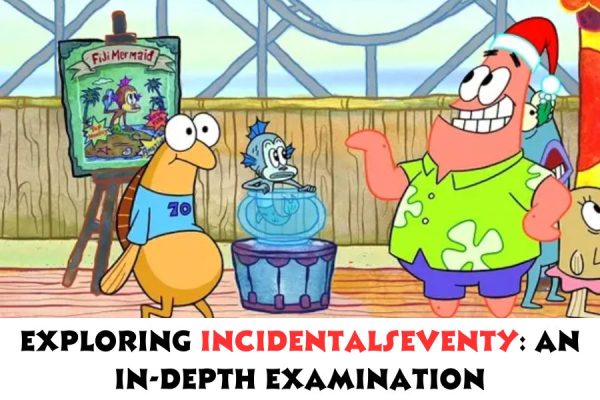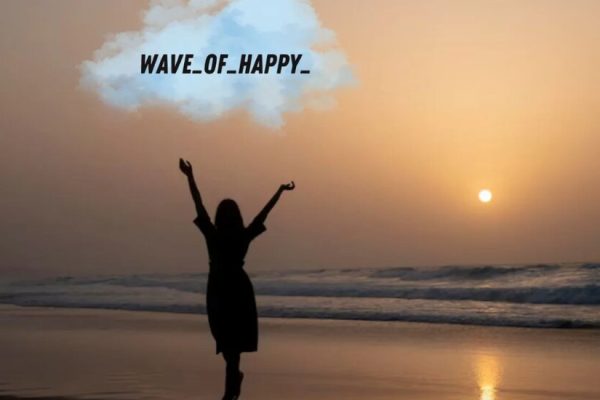What is Psilocybin Mushrooms
Psilocybin, found in certain mushrooms, notably known as magic mushrooms, is a hallucinogenic compound. Consumption of mushrooms containing psilocybin can elicit a range of effects, from feelings of euphoria to hallucinations.
Some individuals use psilocybin recreationally, seeking experiences akin to those induced by hallucinogenic drugs like LSD, characterized by euphoria and sensory distortion.

Designated as a Schedule I substance by the Drug Enforcement Administration (DEA), psilocybin is classified as having a high potential for abuse and lacks recognized medical utility.
While current research does not classify psilocybin as addictive, users may encounter distressing hallucinations, anxiety, and panic following its consumption.
Exploring the Spectrum: Common Effects of Mushrooms
Common side effects of shrooms include feelings of euphoria, giggling, increased sociability, headaches, stomach discomfort, nausea, vomiting, flushed skin, sweating, chills, rapid breathing, increased energy, irregular heartbeat, perceptual changes, hallucinations, agitation, anxiety, diarrhea, muscle weakness, and even psychosis.
While shrooms are often associated with positive effects, they can also lead to adverse experiences known as “bad trips” These may involve feelings of paranoia, anxiety, confusion, panic, fear, and intense hallucinations.
Overdosing of Mushrooms
Overdosing on shrooms is possible with large doses containing excessive amounts of psilocybin, leading to potentially dangerous effects. Additionally, users may experience a comedown from shrooms, characterized by delayed headaches and side effects such as exhaustion, depression, and anxiety, resulting from a sudden drop in serotonin levels in the brain. This comedown can contribute to the addictive potential of mushrooms.
Before embarking on your journey with magic mushrooms, it’s essential to understand the factors influencing how quickly they take effect. Here’s what you need to know:
Metabolism Variation
Just as with food digestion, your body metabolizes shrooms at its own pace. Those with a fast metabolism may experience psychedelic effects sooner than those with a slower metabolism.
Timing of Last Meal
Consuming shrooms on an empty stomach can accelerate the onset of their effects. Conversely, a full stomach slows down digestion, potentially delaying the start of your trip.
Type of Mushrooms
Different varieties of psychedelic mushrooms contain varying levels of psilocybin. More potent types like Psilocybe cubensis may induce effects more rapidly than others.
Dosage
Generally, higher quantities of shrooms lead to stronger and quicker effects. However, it’s crucial to avoid excessive consumption.
Fresh vs Dried
Dried mushrooms are more concentrated, potentially bringing on the trip faster than fresh ones.
Interactions with Other Substances
Substances like alcohol or caffeine can interact with shrooms, influencing the timing of their effects.
Environmental Factors
Your surroundings and emotional state also impact the onset of shroom effects. A relaxed and safe environment can contribute to a smoother start to your experience.
Individual Metabolism Differences
Each person’s metabolism functions differently, affecting how quickly they feel the effects of magic mushrooms. Factors such as age, weight, and overall health contribute to these variations.
Unique Outcomes of Psilocybin Mushrooms
Some individuals may notice changes within as little as 20 minutes, while others may wait over an hour for the effects to manifest. Ultimately, each trip is unique, as everyone’s body reacts differently to psilocybin mushrooms.
Understanding the onset time of psilocybin mushrooms is vital to ensure a safe and enjoyable experience. Many first-time users and even seasoned individuals may underestimate the time it takes for the effects to kick in, leading them to consume larger doses prematurely. This can significantly increase the risk of overwhelming experiences or bad trips.
Therefore, it’s crucial to have a clear understanding of how long it typically takes for psilocybin mushrooms to take effect. By being aware of this information, individuals can make more informed decisions about dosage and timing, ultimately promoting safer and more positive experiences with these substances.
How Long Does It Take for Mushrooms to Kick In?
Psilocybin mushrooms, often referred to as magic mushrooms, typically don’t kick in quickly. The onset time varies, usually ranging from 30 to 120 minutes. Several factors influence how long it takes for the effects to be felt, such as metabolism, the amount of mushrooms ingested, food intake, and whether there are other substances in the body at the time of consumption.
Some individuals believe that consuming magic mushrooms on an empty stomach may lead to a more potent experience compared to taking them with food.
One of the most frequently asked questions about this psychedelic substance is how long it takes to take effect. To uncover the answer to this question and other inquiries regarding magic mushrooms, including the potential risks associated with their consumption, it’s essential to keep reading.
Unveiling the Mystery: Understanding Psilocybin Mushrooms
Magic mushrooms, also known as shrooms, are a type of psilocybin mushroom containing compounds like psilocin and psilocybin, which induce hallucinations or altered perceptions. Psilocybin, found in magic mushrooms, can be consumed in various forms such as swallowing tablets, injecting, or snorting when in powdered form. Shrooms can be ingested raw or cooked, either in their fresh or dried state. Additionally, psilocybin can be infused into tea, mixed with cooked dishes, or blended into fruit juice in its powdered form.
According to the Substance Abuse and Mental Health Services Administration (SAMHSA), psilocybin is one of the most commonly used psychedelics. Classified as a Schedule I substance, it is deemed to have a high potential for misuse and is currently not authorized for medical use in the United States.
Understanding the properties and uses of magic mushrooms, as well as their legal status, is crucial for individuals considering their consumption or interested in learning about their effects.
Illuminating Insights: Contrasting Mushroom Ingestion and Smoking
While some people believe that smoking magic mushrooms can produce hallucinogenic effects, there is much debate surrounding this practice. Magic mushrooms can indeed be crushed into a fine powder and smoked using a pipe or other smoking apparatus, sometimes mixed with cannabis or tobacco. Some users even incorporate pure psilocybin crystals into their smoking mixture. However, it’s important to note that none of these methods are considered safe.
Effectiveness of smoking mushrooms
There are conflicting reports about the effectiveness of smoking mushrooms to achieve a psychedelic experience. Some individuals claim it produces a mild high, but not comparable to ingesting capsules or drinking mushroom tea. On the other hand, many argue that smoking mushrooms is a waste of time and effort, often resulting in little to no hallucinogenic effects besides potential nausea.
The lack of desired effects could be attributed to the high temperatures involved in smoking, which can degrade the active chemical compounds responsible for psychedelic experiences, such as psilocybin.
Understanding the potential risks and limited effectiveness of smoking magic mushrooms is essential for individuals considering this method of consumption. It’s crucial to prioritize safety and explore alternative, more reliable methods for experiencing the desired effects of psilocybin mushrooms.

What is Psilocybin Mushrooms?
Psilocybin is a natural psychedelic compound found in specific mushroom species, commonly referred to as “magic mushrooms” or “psilocybin mushrooms.” This substance is responsible for the hallucinogenic effects experienced after consuming these mushrooms. It falls under the category of tryptamines and acts as a partial agonist at serotonin receptors in the brain, particularly the 5-HT2A receptor.
This interaction with serotonin receptors is believed to influence perception, mood, and cognition, resulting in changes in sensory perception, mood enhancement, and alterations in consciousness. Research indicates that psilocybin may hold therapeutic promise for various mental health conditions such as depression, anxiety, post-traumatic stress disorder (PTSD), and substance use disorders.
However, further clinical studies are necessary to fully comprehend its effectiveness and safety. Psilocybin has a rich history of use in indigenous cultures for spiritual and ceremonial purposes and has garnered increased attention in modern research and clinical settings due to its potential therapeutic uses.
Mushrooms Uses
Psilocybin mushrooms, commonly known as “shrooms,” have been utilized for a multitude of purposes across history, encompassing spiritual, recreational, and therapeutic applications. Here’s a breakdown of their common uses:
Spiritual and Religious Practices
Throughout indigenous cultures, psilocybin mushrooms hold a revered status, often used in spiritual and religious ceremonies. These cultures view shrooms as sacred plants facilitating spiritual experiences, connection with nature, and introspection.
Recreational Use
Many individuals consume shrooms recreationally to experience their psychedelic effects, which may include altered perception, euphoria, visual hallucinations, and heightened sensory experiences. Social settings or outdoor environments are often chosen for recreational consumption, enhancing creativity, social interaction, and self-reflection.
Therapeutic Purposes
Recently, there has been a surge of interest in the therapeutic potential of psilocybin mushrooms for various mental health conditions. Research indicates promising results in using psilocybin-assisted therapy to treat depression, anxiety, PTSD, addiction, and end-of-life distress. Guided psychedelic experiences under professional supervision aim to foster emotional healing, personal growth, and insights.
Self-Exploration and Personal Growth
Some individuals turn to shrooms for self-exploration, personal growth, and spiritual development. Psychedelic experiences can lead to profound insights, increased self-awareness, and a deeper understanding of one’s emotions, thoughts, and behaviors, prompting positive changes in life, relationships, and worldview.
Creativity and Problem-Solving
Shrooms are often sought after to enhance creativity, cognitive flexibility, and problem-solving skills. Psychedelic experiences stimulate divergent thinking, imagination, and novel insights, appealing to artists, musicians, writers, and innovators seeking inspiration and breakthroughs in their creative endeavors.
Mindfulness and Meditation
Shrooms can serve as tools for mindfulness and meditation practices, inducing deep states of introspection, presence, and mindfulness. Incorporating psychedelics into meditation or mindfulness routines can deepen spiritual experiences, fostering inner peace, clarity, and insight.
Understanding the diverse uses of psilocybin mushrooms is crucial for individuals interested in exploring their potential benefits while ensuring safe and responsible consumption practices.
Mushrooms Efficacy
The effectiveness of shrooms, or psilocybin mushrooms, refers to their ability to achieve desired effects, particularly in therapeutic contexts. Although shrooms have historically been used for spiritual and recreational purposes, recent scientific inquiry has centered on their potential therapeutic benefits for various mental health disorders. Let’s delve deeper into the efficacy of shrooms across different domains:
Therapeutic Effectiveness
Current research indicates promising outcomes regarding the therapeutic effectiveness of psilocybin-assisted therapy in treating conditions like depression, anxiety, PTSD, addiction, and end-of-life distress. Psilocybin, the active component in shrooms, has demonstrated profound and enduring therapeutic effects when administered in a controlled setting under the guidance of trained therapists.
Depression and Anxiety
Clinical trials have revealed significant reductions in depression and anxiety symptoms following psilocybin therapy, with some participants experiencing complete remission or sustained improvements in mood and overall well-being.
PTSD
Early investigations suggest that psilocybin therapy may effectively alleviate symptoms of post-traumatic stress disorder (PTSD) and aid in emotional processing, healing, and integration of traumatic experiences.
Addiction
Studies have shown that psilocybin-assisted therapy can assist individuals in overcoming addiction to substances like alcohol, tobacco, and opioids by fostering introspection, enhancing motivation for change, and disrupting patterns of addictive behavior.
End-of-Life Distress
Psilocybin therapy has been explored as a means of providing psychological and existential support to individuals grappling with terminal illness, helping them manage feelings of anxiety, depression, and existential distress while promoting acceptance and inner peace.
Personal and Spiritual Growth
Beyond therapeutic applications, shrooms are valued for their potential to facilitate personal and spiritual development, leading to increased self-awareness, empathy, and interconnectedness with others and the natural world.
Creativity and Insight
Some users consume mushrooms to enhance creativity, problem-solving skills, and cognitive flexibility. Psychedelic experiences induced by shrooms can stimulate novel insights, intuitive thinking, and imaginative exploration, making them popular among artists, writers, and innovators seeking inspiration.
It’s essential to acknowledge that shrooms’ effectiveness may vary based on factors such as dosage, individual differences, and the context in which they are consumed. Furthermore, therapeutic shroom use should only occur under the guidance of trained professionals in a safe and supportive environment. Additional research is warranted to elucidate the mechanisms of action and potential therapeutic applications of shrooms.




